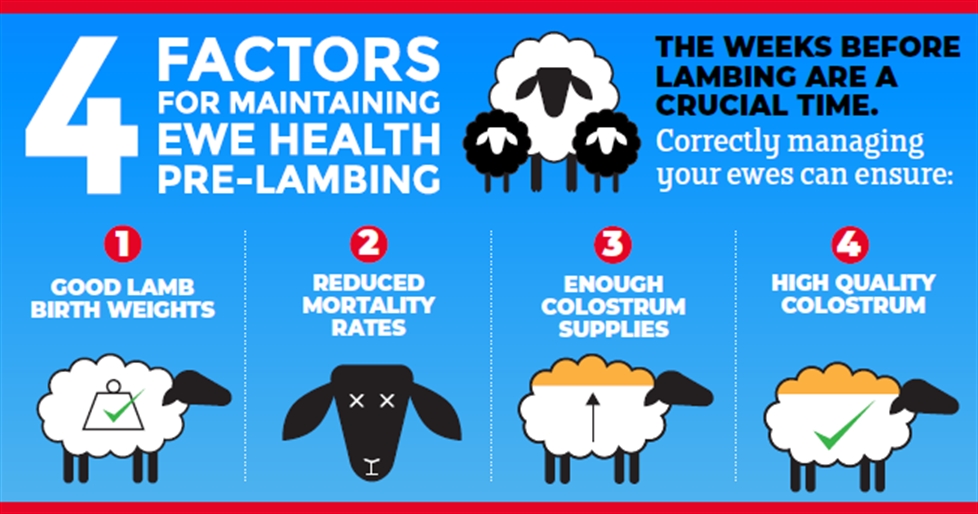
You don’t need us to tell you that there’s a lot to think about when it comes to lambing.
To give you a helping hand we’ve produced a series of three infographics, covering three stages of lambing.
In our first infographic, we’re looking at considerations for managing ewe health pre-lambing.
Why is it important? What can be done? And how to go about it?

As the infographic shows, carefully managing your ewes can allow you to gain some notable benefits. These include good lamb birth weights; reduced mortality rates; ensuring enough colostrum supplies; and ensuring your ewes are producing high-quality colostrum.
Ewe management is the first factor we consider pre-lambing. The goal is to make feeding your ewes easier to manage, so that you can tailor feeding to meet their nutritional requirements. A simple way of doing this is to group your ewes according to the number of lambs they’re expecting.
Secondly, lameness. Lame ewes can’t graze sufficiently to maintain their body condition, effecting both the lamb birthweight and the ewe’s milk production. We have a blog post that covers the lameness five-point plan in greater detail, but the steps that can be taken are vaccinate; avoid; treat; quarantine; and cull. This is vital for improving natural disease resilience within the flock, reducing the spread of disease and improving flock immunity.
Thirdly, maintaining a good body condition. A good BCS will ensure the ewes are able draw on body reserves during early lactation. At available opportunities, place your hand on each ewe’s back. Although it varies by breed, you’re typically looking for a score of 3 - 3.5.
Finally, nutrition. 70% of foetal growth occurs in the final third of a ewe’s pregnancy, so they need more energy. However, that becomes more difficult as the pregnancy also reduces the size of the rumen. To ensure they are getting all the energy that they need, feed them specific formulated rations to match their specific requirements; assess forage stocks and quality; and consider feeding Megalac in late pregnancy and early lactation, when energy demands are highest.
In part two of our series, we’ll be looking at our complete lambing checklist, with 32 questions to consider before lambing.